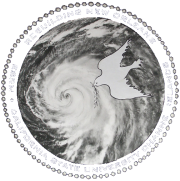The levees in New Orleans were almost created to fail. For those who aren’t sure a levee is a natural occurring barrier of protection separating a body of water from land. Natural levees have helped keep out water from land for thousands of years. However since the Industrial Age levees have been feeling more and more stress due to increase in storm intensities, frequency and human influence. New Orleans and Louisiana, a state with rain almost year round and one who has been heavily effected by hurricanes knows this all to well.
In order to compensate for thebstrasors New Orleans and the federal government, the Army Corp of Engineers, decided to reinforce their levees by adding walls of steel into the levees, known as flood walls. This is an example of their efforts:

Unfinished Levee meant to keep water out of the city. This wall you can still visit.
In 2005 when hurricane Katrina hit New Orleans, the main “fail safe” (the levees) failed around the city engulfing people and communities if thousands of gallons of water.
One of these levees was the London Ave Canal. Although not as devastating as the infamous 9th Ward flooding, the London St canal still had it’s fair share of breakage by destroying homes, displacing families and killing.
https://nola.piratelab.org/wp-content/uploads/2019/03/img_0369.mov
This is only one of the countless of stories of these walls failing. Unfortunately these stories are rarely heard about and still till this day no one has been held accountable for the failure of these walls and levees. No museums have a history of this and hardly no records exists highlighting this catastrophe.
Fortunately at the 7th Street canal there is a memorial made by a non-profit called the NOLA Tree Project, that teaches the community and those who go and tour about the event and the untold truth of the New Orleans levees.







 At the 17th Street Pump Station, these generators may be one of the few things that will make or break the sustainability of keeping New Orleans afloat, the engineers themselves said they would last for five days in the eve of a 100 year event. But is it enough? As we’ve seen lately, climate change has made this unpredictable and arrogant. What will it take for people to actually prepare for worst, like a 500 year event that some believe is inevitable in our era, happens and we’re caught with our pants down again?
At the 17th Street Pump Station, these generators may be one of the few things that will make or break the sustainability of keeping New Orleans afloat, the engineers themselves said they would last for five days in the eve of a 100 year event. But is it enough? As we’ve seen lately, climate change has made this unpredictable and arrogant. What will it take for people to actually prepare for worst, like a 500 year event that some believe is inevitable in our era, happens and we’re caught with our pants down again?







